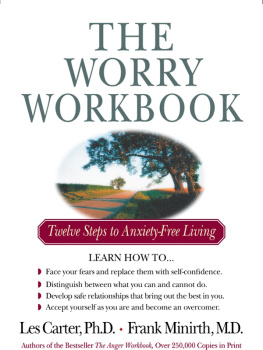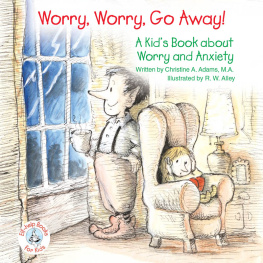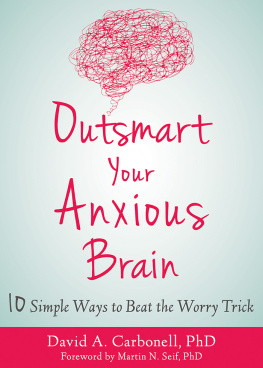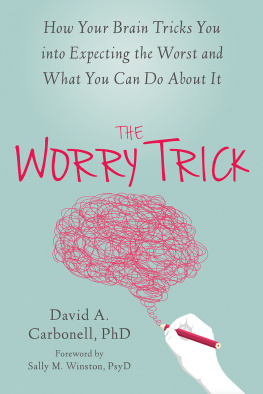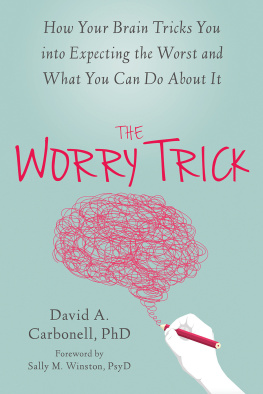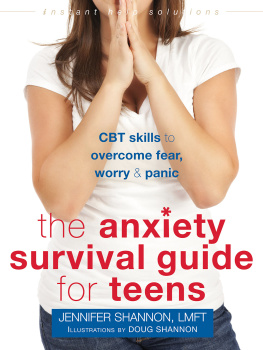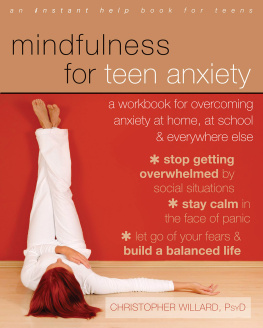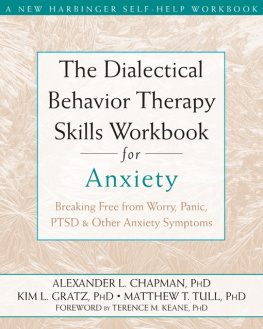
This workbook provides teens with a step-by-step guide for dealing with their worries and increasing helpful behaviors. Teens will be able to relate to the examples and learn concrete strategies to manage anxiety related to school, procrastination, friendships, and social media. Junk mail thoughts is a particularly interesting way to help teens understand the concept of anxious self-talk and manage worry. This excellent new resource is highly recommended for both teens and the professionals who work with them.
LauraC. Reigada, PhD, associate professor of psychology at the City University of New York at Brooklyn College and The Graduate Center
Jamie Micco has crafted a clear, informative, and easy-to-read resource that will be useful for any teen struggling with anxiety, as well as their loved ones. The text details empirically supported treatment components to help fight anxiety in a practical, step-by-step manner. Micco should be congratulated for this masterful work, which fills a critical gap in the field for this age-group.
EricStorch, PhD, All Childrens Hospital Guild; endowed chair and professor at the University of South Florida
This is an excellent resource for anxious teens, and for the clinicians who work with them. The workbook reviews key cognitive behavioral therapy (CBT) strategies and skills, is easy to follow, and includes helpful and relatable examples. The exercises for each section are brief and right on point. As an added bonus, Jamie Micco has included online exercises to complement the written text. I absolutely plan to recommend this book to my clients.
KathrynD. Boger, PhD, ABPP, board-certified clinical child and adolescent psychologist specializing in CBT, and director of the McLean Hospital Anxiety Mastery Program
With creativity, clarity, and fun, Jamie Micco offers teens effective cognitive behavioral strategies to deal with the junk mail thoughts and unhelpful behaviors that come along with chronic worry. Whether teens are dealing with mild or severe chronic worry, they will greatly benefit from reading this book and completing all exercises. This is a must-read for teens!
Patricia E. Zurita Ona, PsyD, psychologist at the East Bay Behavior Therapy Center, and coauthor of MindandEmotions
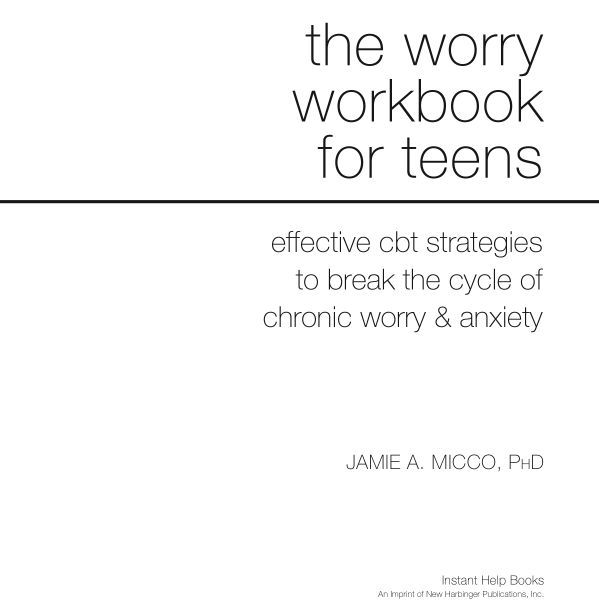
Publishers Note
This publication is designed to provide accurate and authoritative information in regard to the subject matter covered. It is sold with the understanding that the publisher is not engaged in rendering psychological, financial, legal, or other professional services. If expert assistance or counseling is needed, the services of a competent professional should be sought.
Distributed in Canada by Raincoast Books
Copyright 2017 by Jamie A. Micco
Instant Help Books
An imprint of New Harbinger Publications, Inc.
5674 Shattuck Avenue
Oakland, CA 94609
www.newharbinger.com
Cover design by Amy Shoup
Acquired by Tesilya Hanauer
Edited by Jean Blomquist
All Rights Reserved
Library of Congress Cataloging-in-Publication Data
Names: Micco, Jamie A., author.
Title: The worry workbook for teens : effective CBT strategies to break the cycle of chronic worry and anxiety / Jamie A. Micco, PhD.
Description: Oakland, CA : New Harbinger Publications, Inc., [2017] | Includes bibliographical references.
Identifiers: LCCN 2016057902 (print) | LCCN 2017004048 (ebook) | ISBN 9781626255845 (paperback) | ISBN 9781626255852 (pdf e-book) | ISBN 9781626255869 (epub) | ISBN 9781626255852 (PDF e-book) | ISBN 9781626255869 (ePub)
Subjects: LCSH: Anxiety in adolescence--Treatment. | Worry in adolescence--Treatment. | Cognitive therapy.
Classification: LCC RJ506.A58 M53 2017 (print) | LCC RJ506.A58 (ebook) | DDC 616.85/2200835--dc23
LC record available at https://lccn.loc.gov/2016057902
Contents
Welcome to The Worry Workbook for Teens: Effective CBT Strategies to Break the Cycle of Chronic Worry and Anxiety! Cognitive behavioral therapy (CBT) is a hands-on program that helps people to develop the skills they need to cope with anxiety and change their behavior to reduce the intensity and frequency of their worries. This workbook presents CBT strategies intended to break down the cycle of thoughts, emotions, physical feelings, and behaviors that worried teens tend to experience.
Although you can dive into the workbook activities in whatever order you choose, youll find that the workbook is organized by type of activity. The first section helps you understand the difference between typical everyday types of worry and chronic, difficult-to-control worry that gets in the way of living your life. The second section goes further into the types of unhelpful thoughts that increase your anxietyI call these junk mail thinking. The third section helps you develop skills for dealing with your junk mail thoughts.
The fourth section of the workbook focuses on changes you can make in your behavior that will further challenge your anxious thoughts. It provides step-by-step instructions for getting rid of behaviors that take time away from activities youd rather be doing. This section also offers strategies to address common sources of worry, including the excessive use of social media.
In the fifth section, youll learn mind-body techniquessuch as how to relax your bodythat make you less vulnerable to the stress that fuels worry and anxiety. The workbook concludes with how to maintain the improvements youve made by practicing the CBT strategies presented here.
As a bonus to this workbook, you can access additional activities and exercises online. In these activities, youll learn to identify exactly what youre worried about and to challenge the common belief that worry is protective. Youll also learn about managing your schedule and reducing anxiety about taking tests. The online exercises will deepen the skills that you build in this workbook. Please visit http://www.newharbinger.com/35845 to download these bonus activities and exercises.
Many teens will find it sufficient to work through the exercises independently or with the support of their parents. However, others will benefit from using the strategies offered here in their work with a qualified mental health professional such as
- a therapist who specializes in CBT for youth with anxiety disordersthis may be a licensed clinical or counseling psychologist (PhD or PsyD), social worker (LICSW), psychiatrist (MD), or licensed mental health counselor (LMHC);
- a medical doctor (psychiatrist or primary care doctor), who can determine if medication would further help you manage your anxiety; or
- a guidance counselor or school psychologist, who can help you apply these strategies to situations that come up at school or with peers.
If you think you might need additional help or support from one or more of these professionals, talk with your parents, school counselor, or primary care doctor (or pediatrician)they can make a plan to ensure youre getting the help you need.
Congratulations as you get started with this workbook. Youre taking the first steps toward breaking your own personal worry cycle!
Understanding Worry
what is worry, and when is it a problem?
for you to know
Everybody worries sometimes.
Next page

